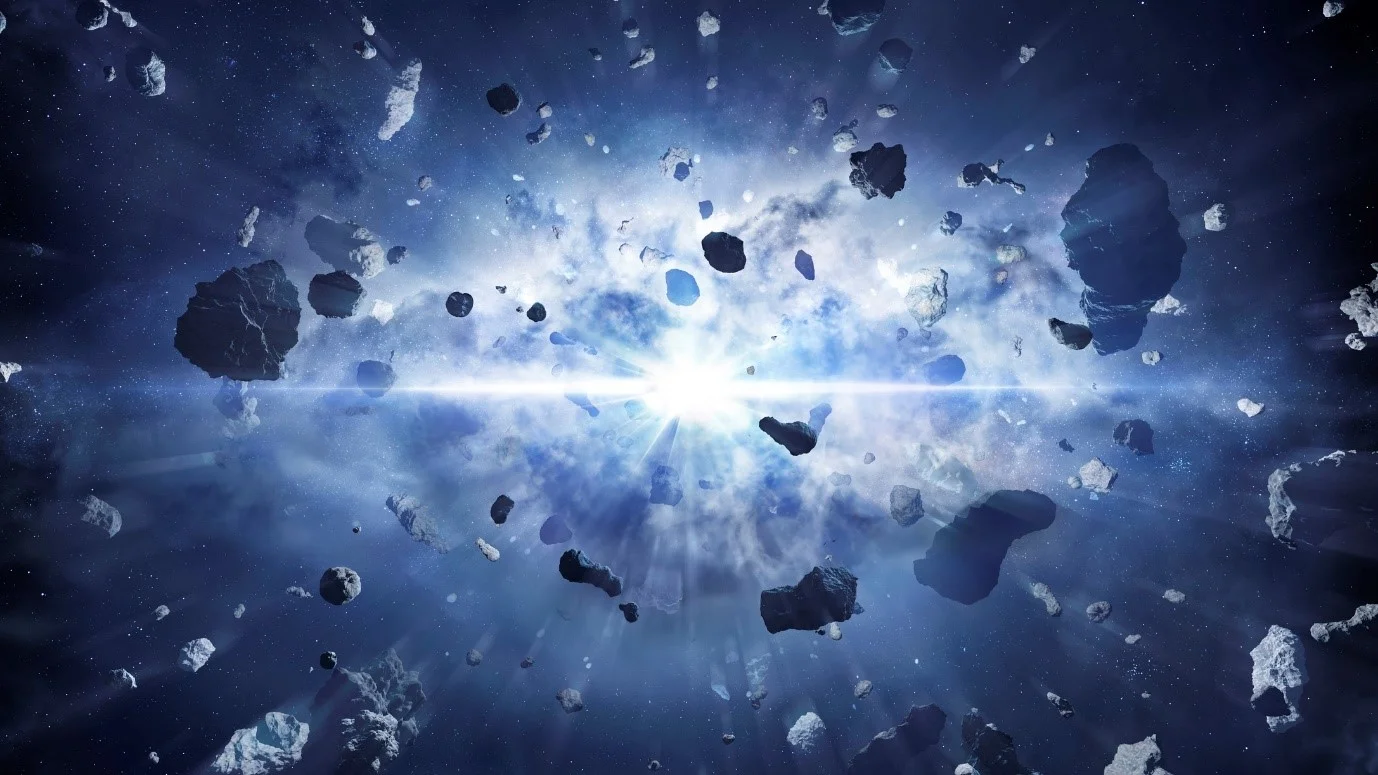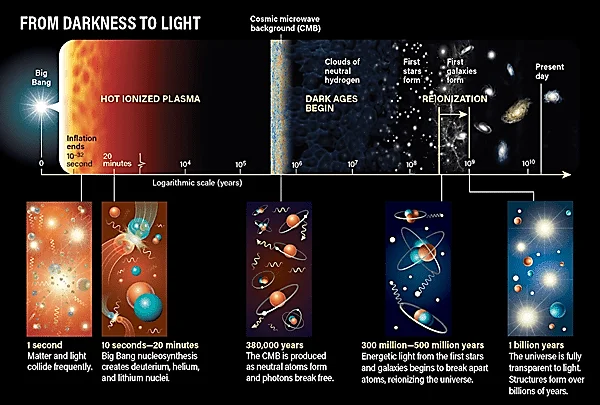UNCOVER (Ultradeep NIRSpec and NIRCam ObserVations before the Epoch of Reionization) program, utilizing the James Webb Space Telescope (JWST), recently sheds light on the end of the ‘dark ages’ and the epoch of reionization in the early universe.
Key findings:
- Ancient galaxies exhibited a higher-than-expected production of ionizing light.
- Dwarf galaxies were discovered to produce about 4 times more ionizing light than previously estimated.
- Only a fraction of this light was necessary to escape to aid in reionization.
About the Dark Ages:
- The Dark Ages refer to a time in the early universe when light sources were obscured by a dense fog of neutral hydrogen gas, hindering light’s journey across the universe.
- During the early universe’s condition, gravitational forces led to gas coalescing into clumps, eventually forming the first stars, whose light initially struggled to penetrate the surrounding hydrogen fog.
- Over time, as more stars were born, their light was sufficient to dissipate the hydrogen fog, entering the epoch of reionization, which transformed the universe into a transparent state with visible stars.
About the UNCOVER program:
- The UNCOVER program aims to identify first-light galaxies, characterize ultra-low luminosity galaxies driving reionization, and probe the role of dust at high redshift.
Ref:Source
| UPSC IAS Preparation Resources | |
| Current Affairs Analysis | Topperspedia |
| GS Shots | Simply Explained |
| Daily Flash Cards | Daily Quiz |




